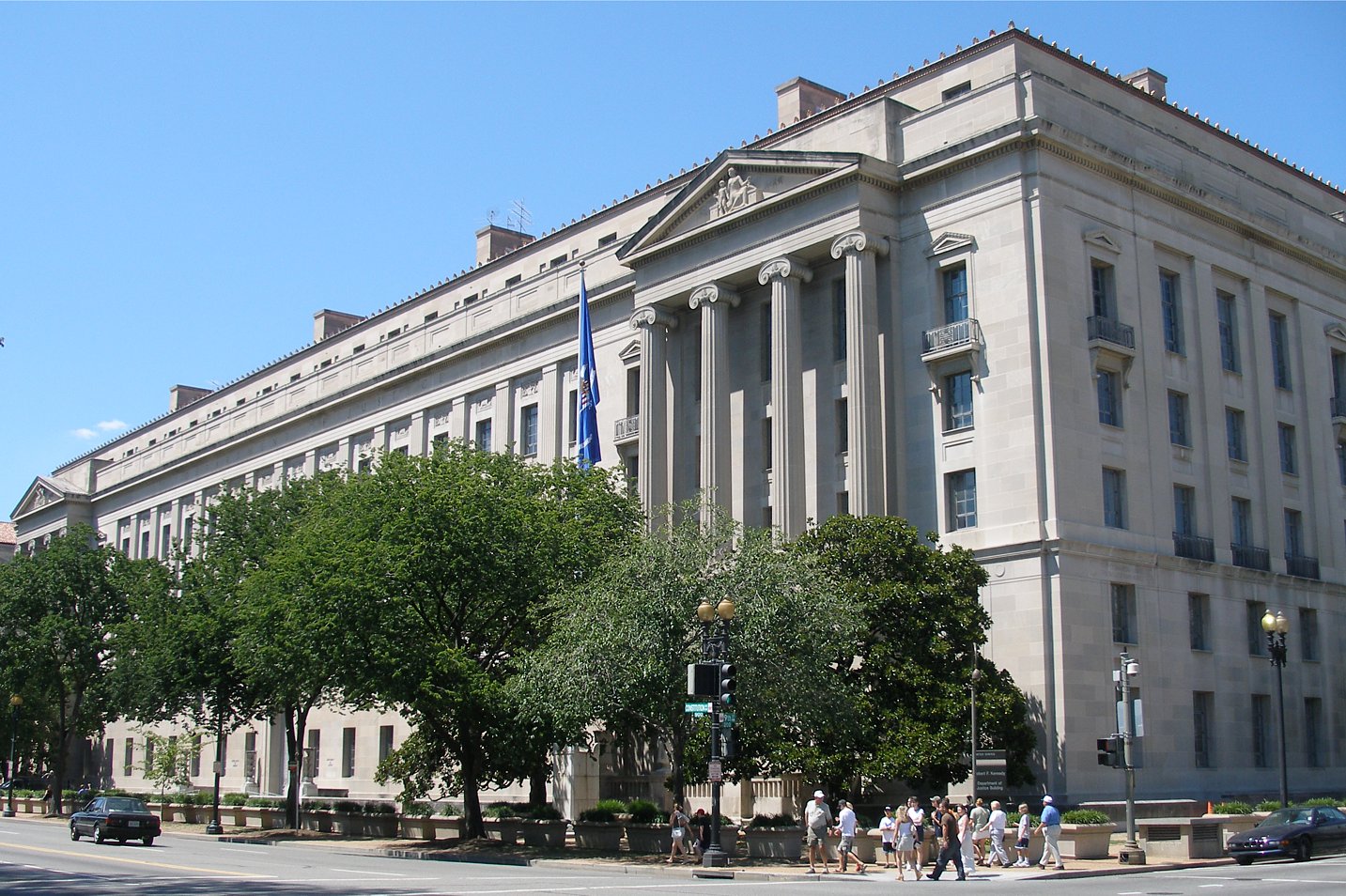DHS Implementation Memos Regarding Trump's Immigration EOs: A Summary
The Department of Homeland Security released two implementation memos today providing guidance to DHS personnel regarding President Trump’s Executive Orders restricting immigration and refugee policies. The memos are substantively the same as the copies released over the weekend and dated February 17th, 2017.
Below is an overview of both memoranda.
Published by The Lawfare Institute
in Cooperation With

The Department of Homeland Security released two implementation memos today providing guidance to DHS personnel regarding President Trump’s Executive Orders restricting immigration and refugee policies. The memos are substantively the same as the copies released over the weekend and dated February 17th, 2017.
Below is an overview of both memoranda.
“Enforcement of the Immigration Laws to Serve the National Interest”
This memorandum implements the President’s Executive Order on “Enhancing Public Safety in the Interior of the United States.” It provides updated guidance to U.S. Immigration and Customs Enforcement (ICE), U.S. Customs and Border Protections (CBP), and U.S. Citizenship and Immigration Services (USCIS) on implementing the Immigration and Nationality Act (INA). There are six provisions of particular note.
- DACA and DAPA
Guidance in this memo does not apply to persons covered under Deferred Action for Childhood Arrivals (DACA) and Deferred Action for Parents of Americans (DAPA). These policies, created by the Obama administration, deferred immigration enforcement action for persons who arrived in the United States as children, subject to certain restrictions, or are parents of U.S. citizens. Today’s memo states that additional guidance on DACA and DAPA will be forthcoming. All other Obama administration immigration directives exempting classes or categories of removable persons from enforcement are rescinded.
- Prioritizing Persons with Criminal Involvement
The memo prioritizes deportable persons who are convicted of or charged with any criminal offense as well as those who have committed acts chargeable with criminal offenses. It also prioritizes any deportable person who fraudulently or willfully misrepresented themselves before any government agency, abused a public benefits program, is subject to a removal order but has not left the country, or otherwise “pose[s] a risk to public safety or national security.” The memo also references a list of specifically deportable persons from the INA, primarily including individuals who have committed crimes, whom the Attorney General reasonably believes intend to violate U.S. law, and who have gained admission into the United States by misrepresentation.
- Expanding Cooperation with Jails and Prisons
The memo revokes the Priority Enforcement Program, restores the Secure Communities Program (which the Priority Enforcement Program replaced), and expands the Criminal Alien Program to increase the sharing of biometric data between DHS and jails and prisons in “any willing [federal, state, and local] jurisdiction[].” DHS aims to use these programs to more easily identify deportable persons currently booked in the nation’s criminal justice system. The memo also aims to expand “to the greatest extent practicable” the INA §287(g) program, which allows qualified state or local law enforcement officers to be designated an “immigration officer” for purposes of enforcing federal immigration law. These officers are allowed, under DHS supervision, to investigate, identify, apprehend, arrest, detain, and conduct searches authorized by the INA. The program will be expanded to cover “all qualified law enforcement agencies that request to participate” and meet the requirements.
- Establishing a Victims Advocacy Office
The memo establishes the “Victims of Immigration Crime Engagement (VOICE)” Office to facilitate DHS engagement with victims of crimes conducted by removable persons. To the extent permitted by law, the office will provide the victim(s) and their family information on the offender, including immigration and custody status. This portion of the memo relates to implementation of the section of the Executive Order decreeing that policies under the Privacy Act protecting personally identifiable information shall no longer apply to persons other than U.S. citizens or lawful permanent residence, to the extent permissible by law.
- Public Reports on Deportations
The memo directs ICE to provide data on apprehended aliens on a monthly basis. This public report must include apprehended persons’ country of citizenship, crimes and offenses, whether they are gang members or have had prior immigration violations, their custody status, and, if applicable, reasons for release or deportation. ICE must also provide a weekly report of non-federal (i.e., State and local) jurisdictions that release from custody persons that ICE has requested for immigration enforcement. The report must reflect the jurisdiction’s name and the requested person’s citizenship and immigration status, arrest or conviction history, date of ICE request, and date of release by the non-federal jurisdiction. This appears to address those States, cities, and universities (among others) that have declared themselves sanctuaries for potentially deportable persons.
- Increasing ICE Staff
ICE is authorized to hire 10,000 additional officers and agents, along with “additional operational and mission support and legal staff,” to implement the above changes.
“Implementing the President’s Border Security and Immigration Enforcement Improvements Policies”
This memorandum implements the President’s Executive Order on “Border Security and Immigration Enforcement Improvements.” It provides updated guidance to all DHS personnel on new policies “designed to stem illegal immigration and facilitate the detection, apprehension, detention, and removal of aliens who have no lawful basis to enter or remain in the United States.” The southern border, and immigration from Mexico and Central America more specifically, is repeatedly singled out for particular scrutiny. Seven themes emerge from this longer document.
- Presumption for Detention Pending Removal Decision
The memo finds that detention is the best policy for enforcing immigration laws at the borders pending a final determination of whether a person ought to be deported or is eligible for immigration relief. It advocates a major shift away from policies that allow people arrested for unlawful immigration status to be released from detention pending deportation, known colloquially as “catch-and-release,” in favor of continued detention until deportation.
The memo provides for parole on a case-by-case basis from this presumption when a person is apprehended or encountered illegally entering or attempting to illegally enter the U.S. if that person (1) is a U.S. citizen, national, lawful permanent resident, refugee, asylee, or has some other valid immigration status, (2) is being deported, (3) consensually departs the United States, (4) must be paroled pursuant a judicial or administrative order, (5) as allowed under INA §212(d)(5), which authorizes the Attorney General to parole persons on a case-by-case basis for “urgent humanitarian reasons or significant public benefit,” or (6) has a credible fear of persecution or torture and will not pose a security risk.
This presumption for detention will become effective once DHS determines, along with the Department of Justice, that a “surge” of immigration and asylum judges and adequate processing and detention facilities are in place. Until then, DHS will prioritize detention “based upon potential danger and risk of flight.”
- Expediting Removal Processes
The memo provides for expedited removal (i.e., removal without an opportunity for further hearing or review unless that person is applying for asylum) for persons who are found to have fraudulently or willfully represented material facts in obtaining immigration documents or who do not have valid immigration papers—not including unaccompanied minors. DHS also plans to publish a new “Notice Designating Aliens Subject to Expedited Removal Under Section 235(b)(1)(a)(iii) that will give the Secretary discretion to allow expedited removal beyond current limits (under which expedited removal is only authorized for noncitizens who entered the country by sea and who were apprehended within 100 air miles of the border and within 14 days of entry). Finally, the memo states that DHS will implement INA provisions allowing the return of aliens arriving on land from foreign contiguous countries (i.e., Mexico or Canada) before the outcome of removal proceedings as long as there is no risk of recidivism, it is reasonably practicable, and consistent with treaty obligations.
- Identifying and Quantifying Aid to Mexico
The memo states that President Trump has “directed the heads of all executive departments to identify and quantify all sources of direct and indirect Federal aid or assistance to the Government of Mexico.” Pursuant that directive, DHS will produce a report on all such aid for the last five fiscal years within thirty days.
- Reinforcing the Southern Border
The memo reiterates the need for a wall along the United States border with Mexico and directs DHS to “immediately begin planning, design, construction, and maintenance” of that wall. The memo provides that, to the extent permitted by law, the wall should use “materials originating in the United States.” A Congressional budget request for the wall must be produced. More broadly, DHS is commissioning a comprehensive study to identify vulnerabilities and provide recommendations regarding security at the southern border. Additionally, ICE and CBP are directed to “engage immediately with all willing and qualified law enforcement jurisdictions” in the border region willing to cooperate with DHS through the §287(g) Program (discussed above). Finally, DHS will “plan and implement enhanced counternetwork operations” to address what the memo terms as increased violence, including gang and related criminal activity, at the border.
- Tightening Enforcement of Parole, Asylum, Unaccompanied Minors Provisions
The memo directs increased “operational capacity” for the Fraud Detection and National Security Directorate to detect and prevent fraud in asylum and benefits adjudication. It also requires a report on fraud detection, deterrence, and prevention within 90 days. Otherwise, the memo largely reiterates standards for assessing asylum applications and the granting of parole. A section on unaccompanied minors is also largely repetitive of existing statutory obligations. Memo provisions in beyond statute require (1) that DHS develop “uniform written guidance and training” for properly processing unaccompanied minors and (2) prosecution or removal of people involved in child smuggling, even if that smuggling is done to reunite a family.
- Public Reporting
As in the first memo, DHS is required to develop public reporting for persons apprehended at or near the border for violating immigration law. These reports must include the number of convicted criminals and the nature of their offenses, the prevalence of gang members and those who have previously violated immigration laws, custody status, reasons for release (if applicable), and the number of people ordered removed and physically removed.
- Increases in Staffing
CBP is directed to hire 5,000 additional Border Patrol agents as well as 500 Air and Marine Agents and officers to implement the above provisions.




